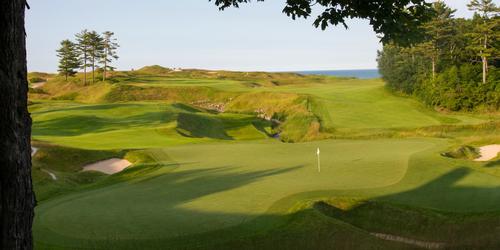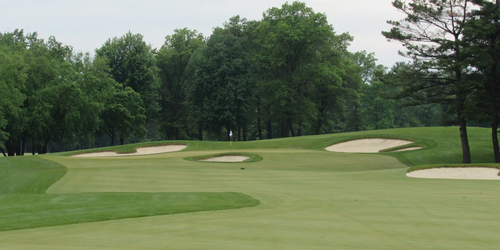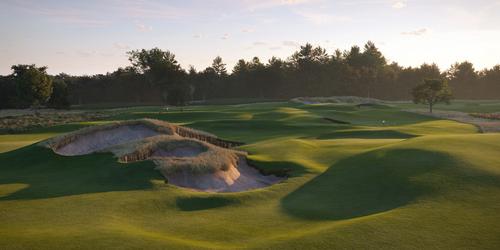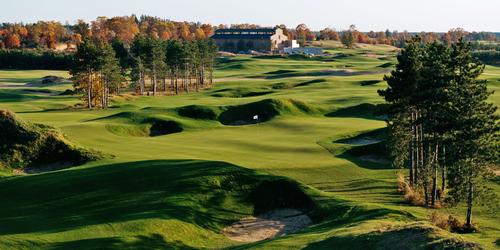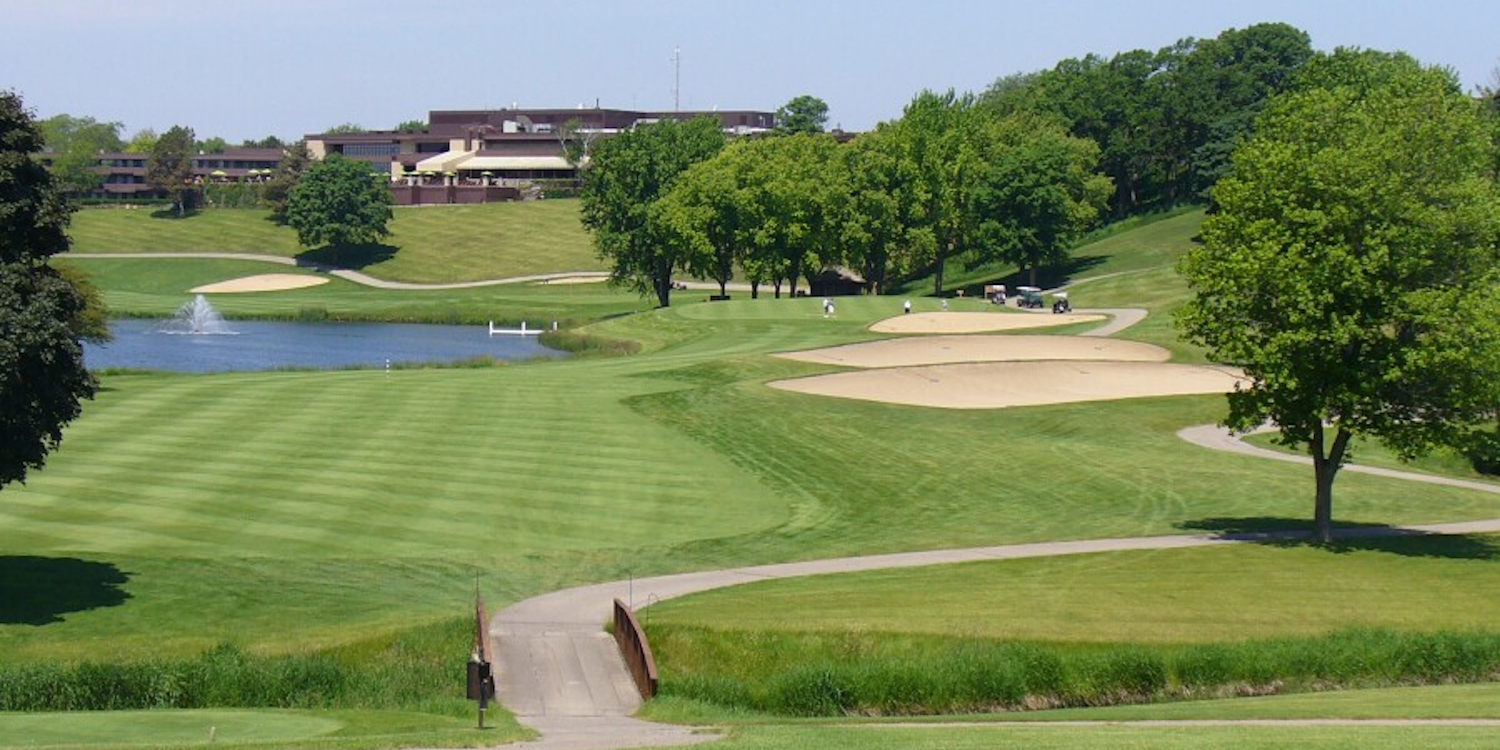
Grand Geneva Resort and Spa: From bunnies to birdies
By Kiel Christianson
The Lake Geneva area of southern Wisconsin has been the preferred getaway for Chicagoans ever since 1871, when Chicago burned and industrialist families fled the remains of the city smoldering in the sweltering summer heat. The shores of Lake Geneva are lined with the "summer cottages" of families with names like Wrigley and Maytag - "cottages" with bedrooms numbering well into the double-digits.
In 1968, another famous Chicago millionaire - Hugh Hefner - opened the Lake Geneva Playboy Club. Movie, sports, and TV stars flocked to the resort to enjoy the amenities of the Frank Lloyd Wright-inspired resort. There they found first-class service, gourmet dining, and a host of outdoor activities, including 36 holes of championship golf.
Today, the Grand Geneva Resort maintains the tradition of excellence in a completely family-friendly environment, with upgraded facilities and even more outdoor activities. Along with horseback riding, zip-lining, mountain biking, tennis, swimming, skiing, snowmobiling, and the total relaxation of the WELL Spa, golf remains the centerpiece of the picturesque property.
It is rare to find a Midwestern golf destination with two courses designed by very different course architects. The Highlands (originally dubbed The Briar Patch) was one of the earliest Jack Nicklaus and Pete Dye collaborations. The Brute was laid out by Robert Bruce Harris, who was one of the more underrated Midwestern golf course architects of the second half of the 20th century. About 20% of play comes from resort guests, about 50% from day-trippers from Chicago, Milwaukee, and elsewhere, and the rest are members. Standard rack rates hover around $160 in peak season, but there are fabulous stay-and-play packages, some of which include unlimited golf or even "free" golf during certain seasons when booking a room at the resort.
Playing The Highlands
Early Nicklaus-Dye designs were notoriously difficult, and The Briar Patch was one of them. In the 1990s, Bob Cupp and Bob Lohman pruned the sharpest thorns from the course, and the redesigned layout was renamed The Highlands. At 6,625 yards from the back tees, length is not the only - or even main - defense here. Only four par 4s stretch to 400+ yards from the tips, and only two do so from the "members'" tees (including the stout 461/450-yard 9th). So club selection, shot-making, and ball placement are all vital to scoring. The Nicklaus-Dye strategic game is strong here.
One highlight is the bucolic 192-yard, par-3 4th, where the tee shot is nearly all carry over wetlands and a stream to a wide but shallow bowl of a green. Choose the right club and find the green for par; miss it, and a double-bogey or worse awaits.
On the back side, the 594-yard 11th stands out. It is a snaking par-5 with an awkward landing area off the tee. The elevated green resists shots of any length, especially foolhardy second shots. The putting surface is long and narrow, and it is set at an angle such that only a perfectly placed lay-up towards the front will have a chance to hold. If the pin is down front, where the surface is rather devilishly mounded, even a short wedge might trickle off.
The 11th hole on The Highlands is a strategic and difficult par 5.
Although The Highlands allows for some wayward drives today thanks to the 1990s redesign, its softened name belies its difficulty from tee to green.
Playing The Brute
The Brute is longer than The Highlands at 7,029 yards from the tips, and it is rated over 2 strokes more difficult (74.3 vs. 72.0), hence its moniker. Course architect Robert Bruce Harris was a master at what is now revered as "natural" course design. He largely allowed the land's natural contours and flow dictate routing and shaping, and he could design interesting courses conforming to whatever budget he was given. In 1968, Hugh Hefner had a pretty large budget.
The tee shot on the 9th hole of The Brute is a fun, and challenging, one. How close to the water will you dare to get?
The Brute features numerous blind shots off the tees and occasionally elsewhere, so the GPS in the golf carts is extremely helpful. There is plenty of water and woods to swallow misbehaving golf balls. And the greens are a mixture of turtlebacks and potato chips, varying widely in size. There are some stark elevation changes from tee to fairway - most notably at the 500-yard par-5 11th, which teeters at the highest point of the property. Perhaps the most visually striking feature of The Brute is the bunkering: many bunkers are enormous, shallow circles that resemble gigantic dinner plates.
The wide, shallow bunkers on The Brute make for a lot of long bunker shots, even in greenside hazards.
Although power is at more of a premium here than on The Highlands, shot-making is still critical. At the 374-yard 3rd, for example, the steeply downhill fairway only levels out as it is pinched off to about 15 yards wide between two ponds. It is from here where you have the best chance to land your second shot on the domed green perched some 30 feet back up above the ideal landing spot. Stay too short off the tee, you'll have a severely downhill lie for your second. Miss the flat spot right or left, you'll be wet.
That sliver of fairway between the ponds is the ideal place to hit your second shot to the 3rd green on The Brute.
The closing three holes are where you'll experience both the "beauty" and the "brute" of Harris's design. The 190-yard 16th is a lovely par 3 playing from an elevated tee to an elevated green. The 420-yard 17th presents a gorgeous tee shot to a fairway set at an uncomfortable angle across the corner of a fountained pond. The 464-yard 18th rewards even a hammered drive with a long approach. If you do find the enormous green with your second (or third) shot, this is a very easy green to three-putt.
The tee shot on the 17th of The Brute calls for a big power fade...or a draw out over the pond back into the fairway.
The 18th green on The Brute is probably the largest on the course - the site of my only 3-putt of the day.
The Resort
As noted, the resort itself pays homage to Wright's Prairie style - long, low, horizontal lines, mixtures of textures and materials, and strong central geometric features. Moving between floors and buildings can be somewhat disorienting, but the plentiful signage reassures you that people like Sonny and Cher and Sammy Davis, Jr., used to get turned around in the same hallways.
The rooms have been updated and retrofitted with all the modern amenities. If you spring for a suite-some of which overlook The Brute - you'll have plenty of room to spare.
Dining options are plentiful, with the Grand Café offering fine seasonal fare, and the Geneva ChopHouse serving up fine dining options. The bar in the main lobby overlooking the pool is a classy and classic place for a pre- or post-dinner drink.
Whenever I bring up the Grand Geneva Resort to an older golfing buddy of mine, he regales me (again...and again) with the story of how he hung out with Axl Rose and Stephanie Seymour at the pool during a golf trip to the resort in the early 1990s. I can't promise a brush with the rich and famous today, but I can guarantee a luxurious, historic vacation - and golf! - experience in the heart of the Midwest.
Revised: 07/28/2023 - Article Viewed 5,590 Times
- View Course Profile
About: Kiel Christianson
![]() I’ve been a travel and golf writer for online and print publications for 25 years, including over 10 years with The Golf Channel. My blog on The Golf Channel websites began in 2003, making it one of the first in the golf world. Other publications include poetry, food and travel features, and research articles in the broad area of cognitive science.
I’ve been a travel and golf writer for online and print publications for 25 years, including over 10 years with The Golf Channel. My blog on The Golf Channel websites began in 2003, making it one of the first in the golf world. Other publications include poetry, food and travel features, and research articles in the broad area of cognitive science.
Contact Kiel Christianson:
Midwestern Golf - Publisher
217-714-4561







